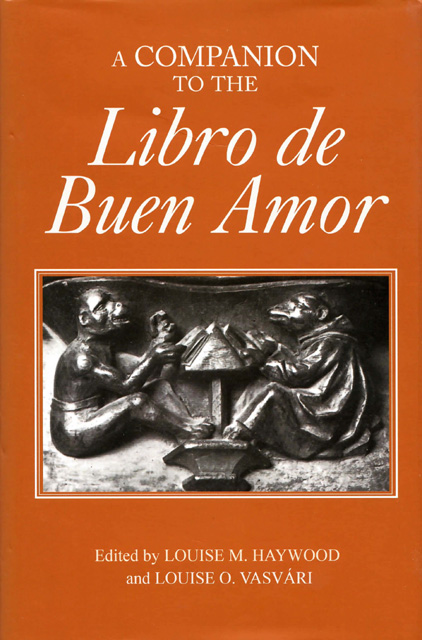Book contents
Juan Ruiz and the Libro de Buen Amor: Contexts and Milieu
Published online by Cambridge University Press: 10 May 2023
Summary
The book known as the Libro de Buen Amor or del Arcipreste is one of the most diverse, unusual, and challenging texts any reader is likely to encounter. It has a loose, largely first-person, narrative thread which recounts the failed amorous adventures of the narrator who is apparently identified with the named author, Juan Ruiz, the Archpriest of Hita. It is polymetric, with cuaderna vía (a monorhymed four-line alexandrine) narrative verse and lyric metres, and comprises a range of materials, representing the majority of medieval generic forms: a wide range of tales, exemplum (plural, exempla; see Taylor below) which demonstrate how to behave, some in the form of Aesopic tales (for example, those used by the Archpriest in his attack on Love, 181–422) and others are fabliaux, comic tales depicting low-estate characters (such as Pitas Payas, 474–89); didactic, sometimes burlesque, passages (see the section on penance, 1128–72, or on the Arms of the Christian, 1579–1605); a prose, possibly parodic (Chapman 1970), sermon on the thema (Biblical versicle which forms the topic), ‘Intellectum tibi dabo [. . .]’ (‘I will give thee understanding, and instruct thee in the path that thou shouldst follow: my eyes shall be fixed upon thee’, Psalm 31, v. 8; after stanza 10); an extended dream-vision sequence in which the narrator’s identity shifts (180–909; see Deyermond below); a carnivalesque mock epic (the Battle between Flesh and Lent, 1067–1314; see Vasvári below); and finally, lyrics, ranging from secular bawdy (‘Cruz cruzada’, 115–22, and serrana, or wild-women, lyrics, 950–1042) to sincere religious ones (on the Joys, 20–43 and 1635–49, and Sorrows of the Virgin, 1049–58).
The Libro poses many dilemmas to the modern reader and the purpose of this essay is to provide some orientation to those new to its study, although more detailed consideration of some of these issues will be provided by other contributors to this volume. I shall begin by addressing questions of authorship, dating, and the identification of Juan Ruiz. I shall move on to consider the implications of the use of a first-person narrator who is apparently identified with the author for the interpretation of the Libro and its relationship to the European, Arabic, and Hispano-Hebraic literary traditions, and then examine questions of narrative unity.
- Type
- Chapter
- Information
- A Companion to the Libro de Buen Amor , pp. 21 - 38Publisher: Boydell & BrewerPrint publication year: 2004



